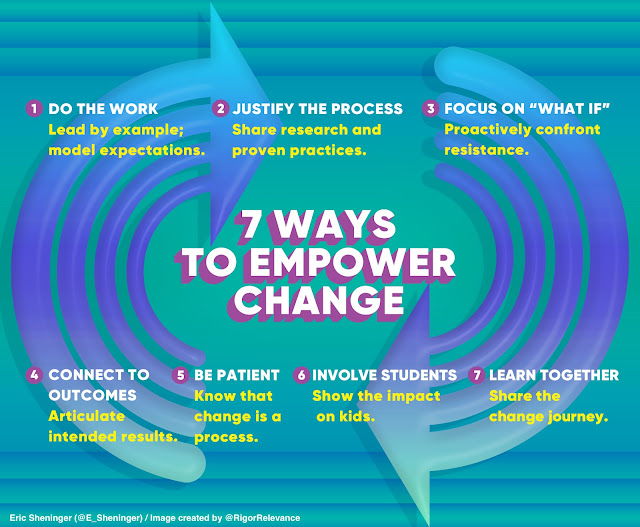When we do things a certain way, we often become comfortable, especially if we are satisfied with the result. While this might seem perfectly fine on the surface, the truth is that progress can become stagnant. The fact of the matter is that change will always be needed as employing the same old thinking will continue to lead to the same old results. My hope is that if you are reading this post, you are open to growth and the pursuit of innovative practices. That, in my opinion, is the easy part. The heaving lifting lies in moving the masses towards a common goal.
The hardest challenge you will face is not changing yourself, but convincing or empowering others to embrace change.
Changing perception and behavior amongst those you work with and for can possibly be the most complex task you ever take on. Change is hard. There is no way to sugarcoat this fact. It is even harder for people who don’t see the value in doing things differently or are burnt out. The need to push forward is simple yet profound. Every student in every classroom and school deserves excellence. While there will always be a myriad of obstacles, the struggle and effort will pay off.
So, where does one begin? I shared the following in Digital Leadership:
A true testament to an exceptional leader, regardless of position, is their ability to convince, persuade, or inspire others to change, especially those who do not want to. It’s not now about trying to get buy-in but moving others to see the value in the change through embracement.
The most challenging yet gratifying work you might ever engage in is empowering your colleagues to change. Below are some strategies for you to consider when trying to assist your colleagues with changing their professional practice.
- Do instead of asking. Impactful change comes from your ability to effectively model expectations for others. While it might be lonely at first, leading by example is the best way to empower others.
- Justify with research and proven practices. Sharing what has been found to work strengthens your call to action.
- Focus on “what if". Tackle fears and resistance head-on to alleviate concerns by being ready to counter any “yeah but” responses.
- Connect to outcomes. Clearly articulate how the change will improve professional practice resulting in improved student learning and achievement.
- Be patient (to a point). Change is a process, not an event. Treat your colleague like a student and remember how satisfying and rewarding it was when you helped that student succeed. Help others see the value of the change on their own by taking a step back.
- Get students involved. There is no better way, in my opinion, to convince others to change when educators can see firsthand the impact it has on kids.
- Learn together. Encourage colleagues resistant to change to attend professional learning opportunities with you, especially administrators. If that doesn’t work, make sure you present what you learned at any recent learning experience, either during a faculty meeting or one-on-one.
As with any advice, context matters. Keep this in mind as you look to implement the strategies presented above. When it is all said and done, always remember that the most difficult work with the change process involves moving the masses to scale the initiative for the betterment of all learners. If you are willing to put in the time and work while acknowledging some of the aggravation and stress that naturally comes with dealing with difficult people, a potential positive outcome will be that much sweeter.

Eric,
ReplyDeleteAs an aspiring leadership teacher, your blog is inspiring. I have seen such proven strategies work in some schools and I have seen such strategies watered down to calm the moods of it's constituents. I do believe however, when effectively used, the strategies can move institutions to effectively cause change. I believe that one of the worst type of leaders are tellers and not doers. At my current school the principal likes to use new strategies without adequately justifying the causes to faculty and staff. The leadership team also do not seem prepared to handle questions and refers to emailing the principal which shows a lack of communication.
Moreover, I do believe that with open communication, doing the right work, and involving students; schools begin to cause the right change to change institutions. Mentors are important to have in leadership to assist in fostering appropriate behaviors that lead to success. No matter the job, everyone needs a mentor.
Following state standards is in order for maintaining student results. Teacher salaries and hours are important for reaching the highest learning potential. Change comes when parents are actively included in student body events or in organizing certain curriculum for that year of learning. It is important to access how state tests, daily quizzes, or homework helps students to pass each marking period with acceptable benchmarks (learning goals).
ReplyDelete